Electric medium and heavy-duty vehicle manufacturers are gearing up to meet growing demand from fleet managers looking for cleaner and lower-cost options.
Stan Cross | August 24, 2023 | Clean Transportation, Electric VehiclesThe Advanced Clean Trucks (ACT) Expo is the country’s most significant alternative-fueled medium and heavy-duty vehicles showcase. In years past, propane and natural gas vehicles dominated the expo hall. But this year in Anaheim, California, over 12,000 conference goers attended the massive expo hall as electric vans, buses, and trucks from legacy medium and heavy-duty vehicle manufacturers and innovative all-electric start-ups took it over. Walking through the hall, it was hard to imagine anything but an electric van, truck, and bus future, especially since most vehicles on display were already in service.
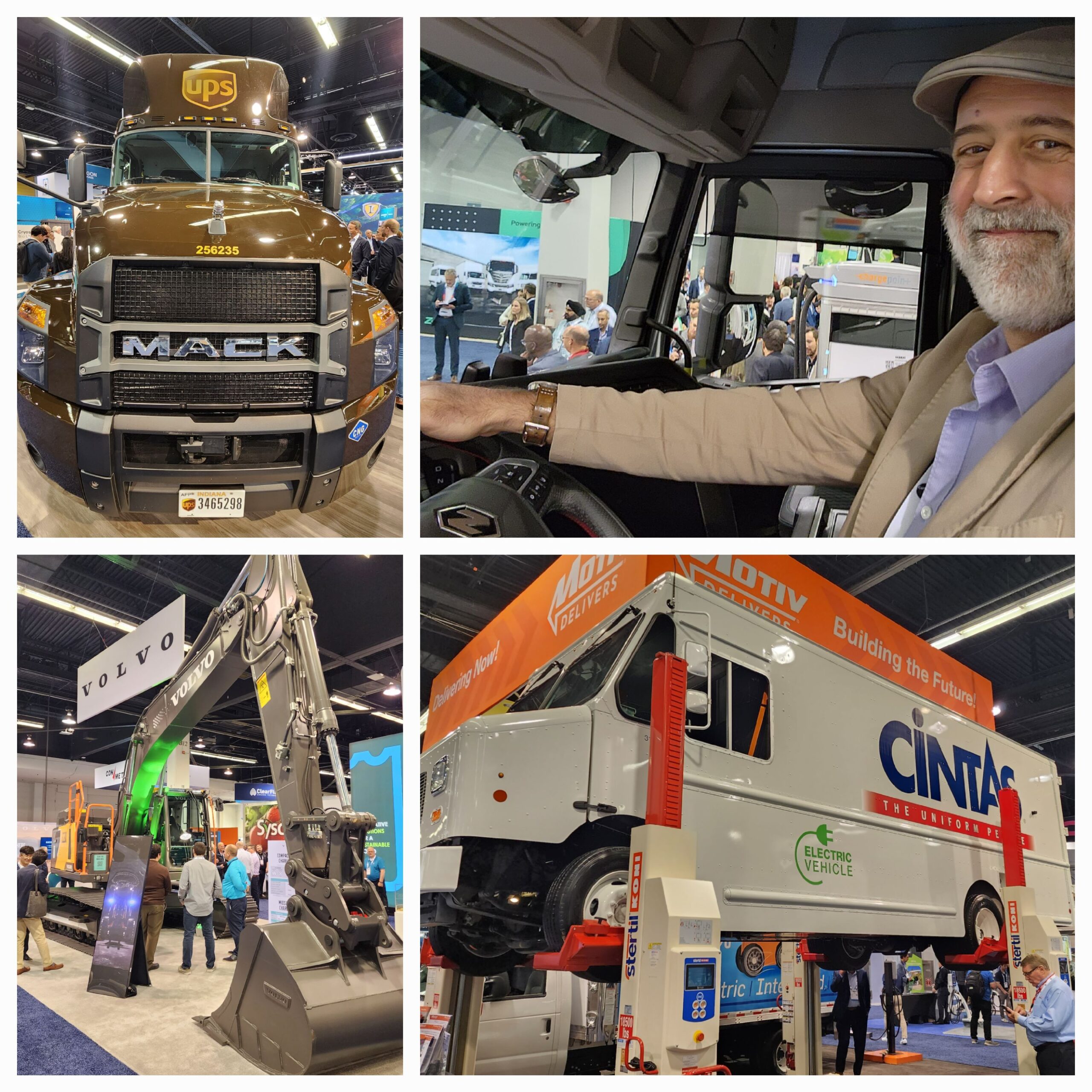
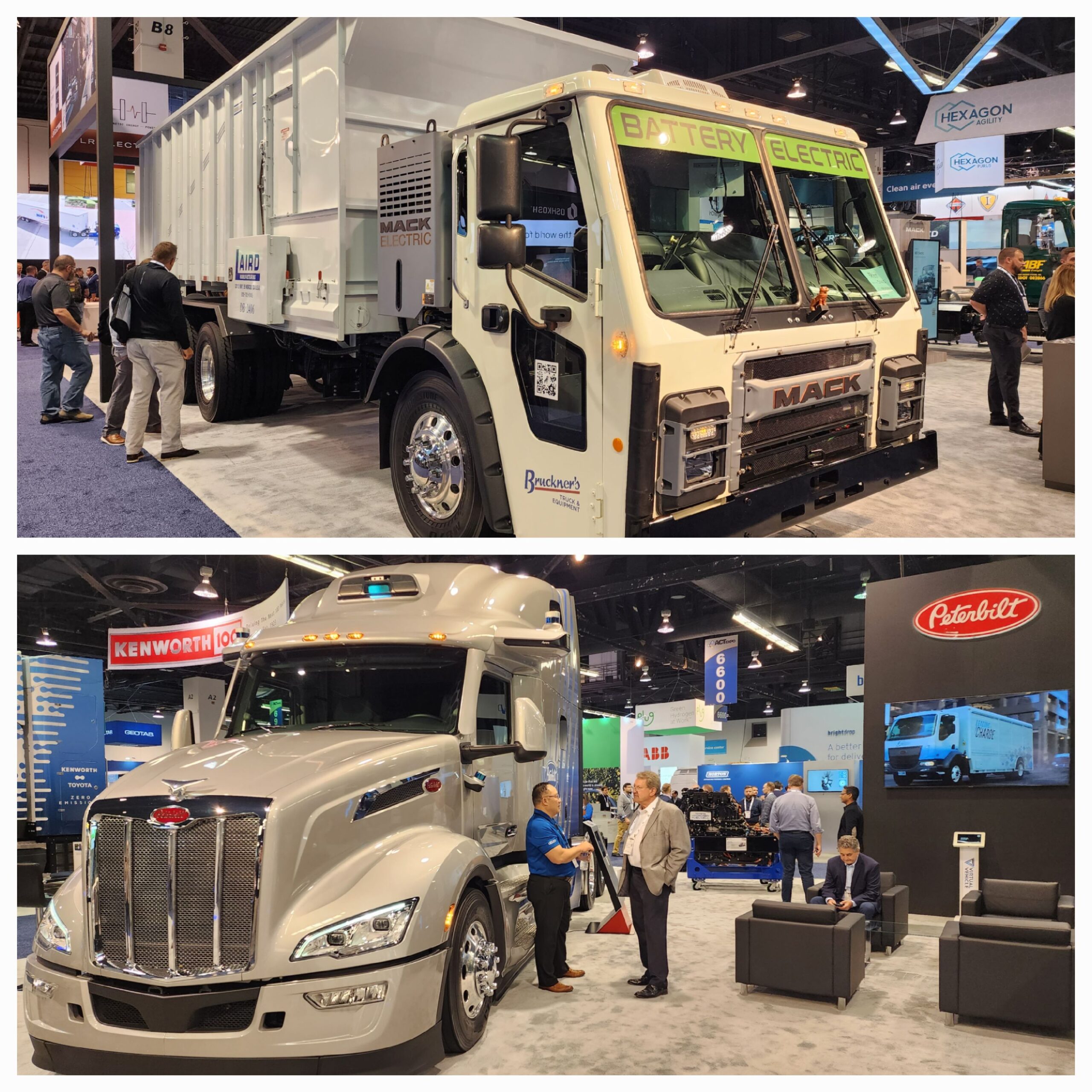
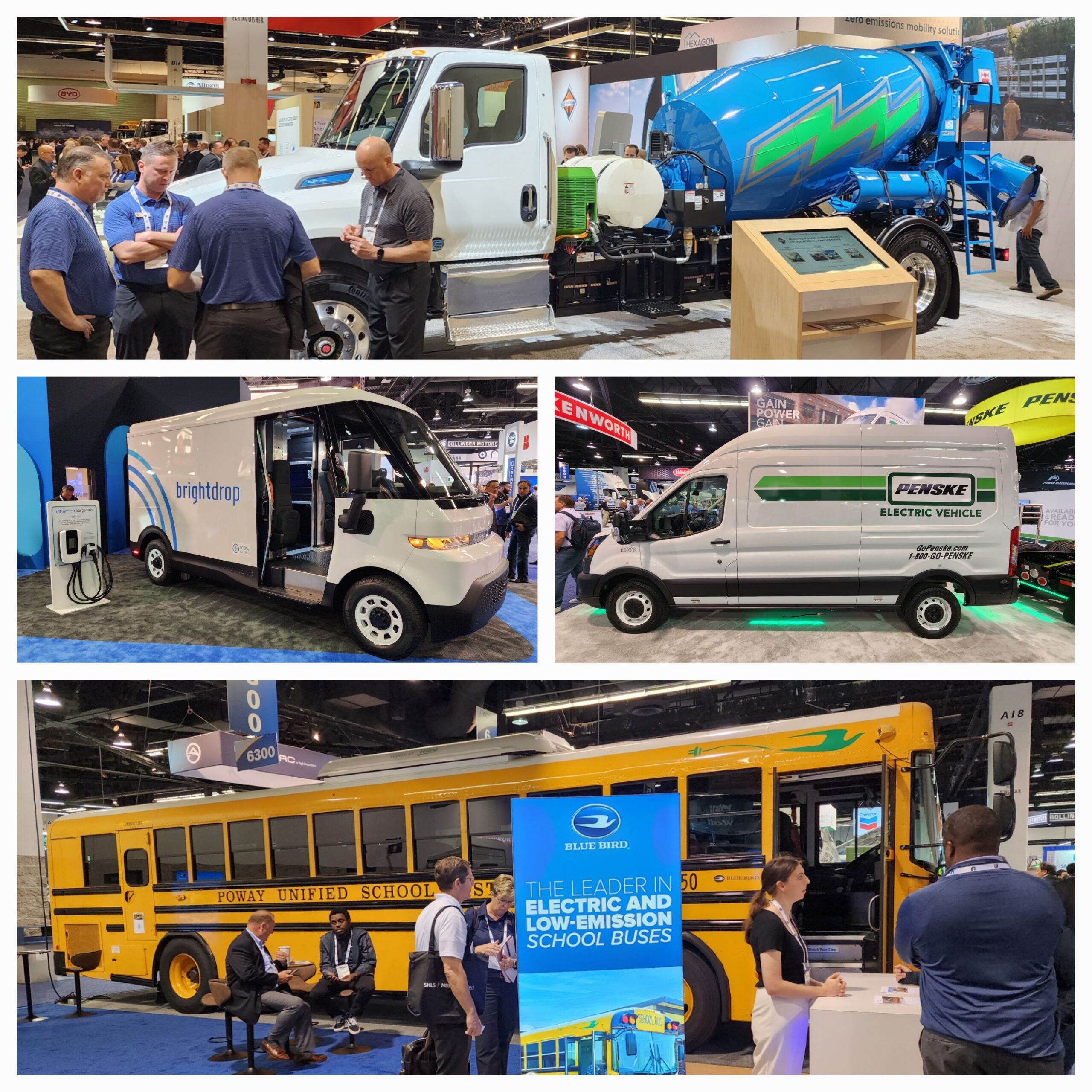
Public Policy in the Driver’s Seat
The dominance of battery electric vehicles at the ACT Expo indicates where the market is headed. Supportive public policy, industry innovation, and growing consumer desire conspire to take it there.
The Inflation Reduction Act (IRA) unleashed manufacturing and consumer tax credits, including for non-tax paying entities like local, state, and tribal governments. On the manufacturing side, there is a battery production tax credit, $3 billion in loans to EV manufacturers, and $2 billion in direct grants to recently closed or at-risk auto manufacturing facilities to support retooling production lines to build EVs. On the consumer side, the capital cost barrier to buying an electric instead of a diesel vehicle is addressed with a 30% tax credit on commercial EVs, up to a maximum of $40,000 for medium and heavy-duty vehicles. EV charging stations are also eligible for a 30% tax credit on the first $100,000 in costs per charger.
Meanwhile, the Bipartisan Infrastructure Law invests in electric vehicle (EV) charging infrastructure along highways, ports, and distribution hubs; and provides grants and rebates for purchasing EVs. Together, these federal packages are incentivizing – and driving down the cost of – domestic manufacturing, reducing purchase prices for electric vans, trucks, and buses, and seeding the charging infrastructure needed to make fleet operators more comfortable with the transition.
For a deeper look at these landmark public policies, read the first blog in this series, Big Electric Vehicles are Coming Down the Road.
The Market Gears Up
As important as the scope and scale of these federal programs are, their timing is equally critical.
The Covid pandemic exposed weaknesses in the global supply that significantly impacted automotive sectors. In its wake, the U.S. government and auto manufacturers recognize the need to build a more durable domestic supply by rapidly reinvesting in American manufacturing. Transportation electrification is a means by which we can invigorate domestic production while decoupling the nation from global oil market volatility and political instability, addressing the climate crisis, and improving public health by eliminating tailpipe emissions.
The technologies we need to scale electric vans, trucks, and buses have been developed and deployed in the electric car market over the past decade. Now, electric medium and heavy-duty vehicle, semiconductor, battery, and supply chain manufacturers are joining car makers in expanding production, while at the same time, EV charging infrastructure companies are standardizing the ultra-fast Megawatt Charging System to deliver 1,000 kilowatts to heavy-duty vehicle battery packs, which is staggering when considering ten years ago, the fastest charging was 50 kilowatts.
Several medium and heavy-duty fleet charging efforts are underway. Truck maker Daimler, global energy company NextEra Energy, and investment firm BlackRock recently announced a joint venture called Greenlane that aims to create a nationwide network of fast charging for battery electric and hydrogen fuel cell vehicles. And then there are Forum Mobility, WattEV, Schneider, and Prologis, which are all building large electric truck charging depots connecting California’s ports and inland distribution centers to West Coast markets.
Meanwhile, the cost of all EVs is coming down, largely thanks to battery prices that have fallen dramatically with the global upsurge in electric car purchases since 2013.
Lithium-ion Battery Pack Costs Worldwide
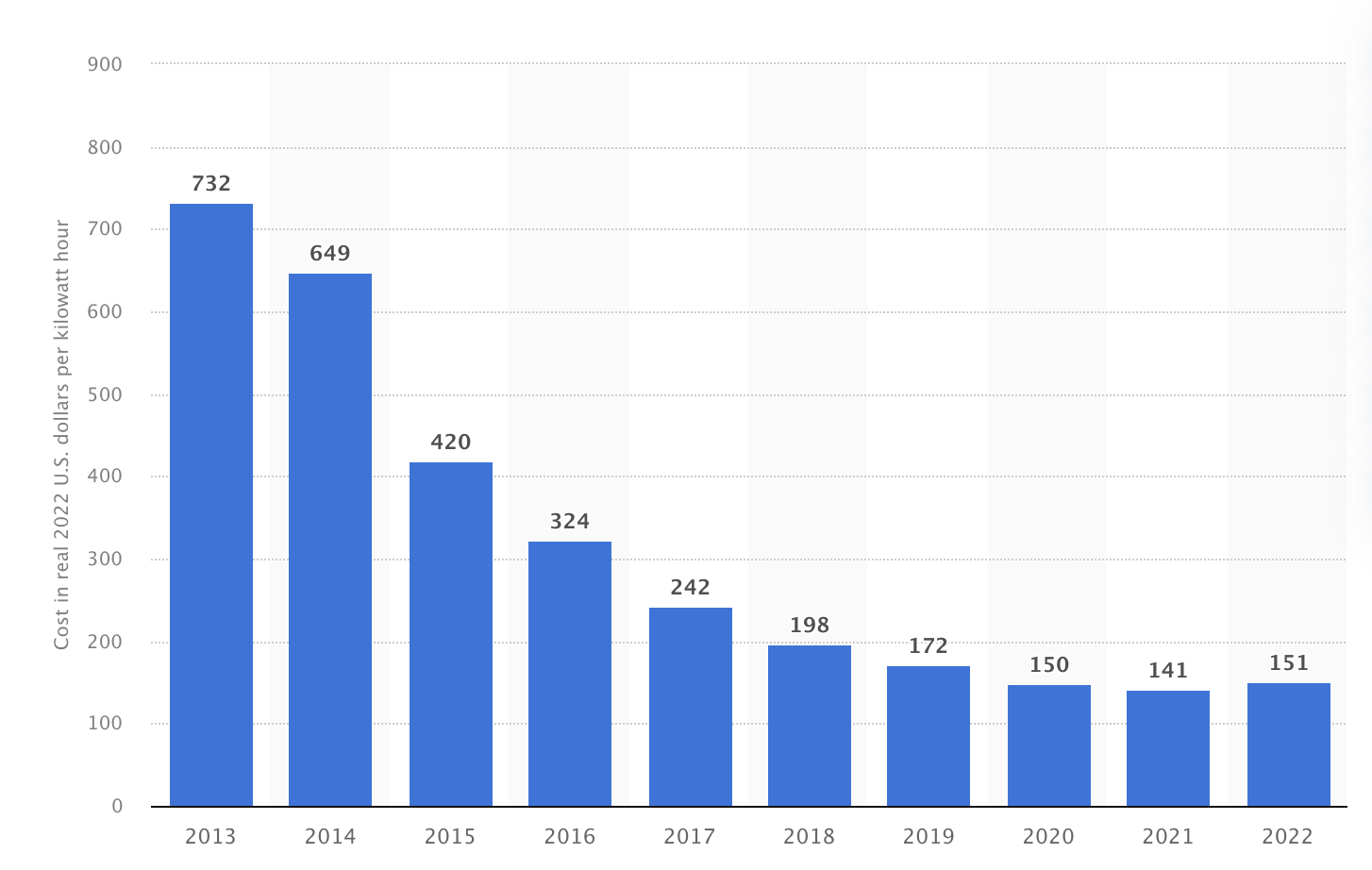
As lithium-ion battery costs come down, battery researchers and manufacturers are improving chemistries to boost efficiency, shifting to more abundant minerals such as iron and phosphate, and moving away from rarer minerals, especially those concentrated in nations fraught with human rights abuses, such as cobalt in the Democratic Republic of Congo.
Vans, Trucks, and Buses, Oh My!
Medium and heavy-duty vehicles are purchased mainly by fleet operators to either provide a public service or make a company money. The purchase decision is, therefore, different for these larger vehicles than consumer EVs since taxpayer money and/or profitability are on the line. Furthermore, the medium and heavy-duty vehicle markets include many vehicle types that do many different jobs, and it follows that some are more straightforward to electrify than others. Focusing on easier-to-electrify vehicles now helps momentum build, technologies advance, and consumer awareness grow. Talking with industry representatives at ACT, it was clear that the electric van and bus markets are already expanding, while larger trucks and off-road vehicles are in existing testing phases and beginning to be purchased by early fleet adopters.
Zero-Emission Beachhead Strategy
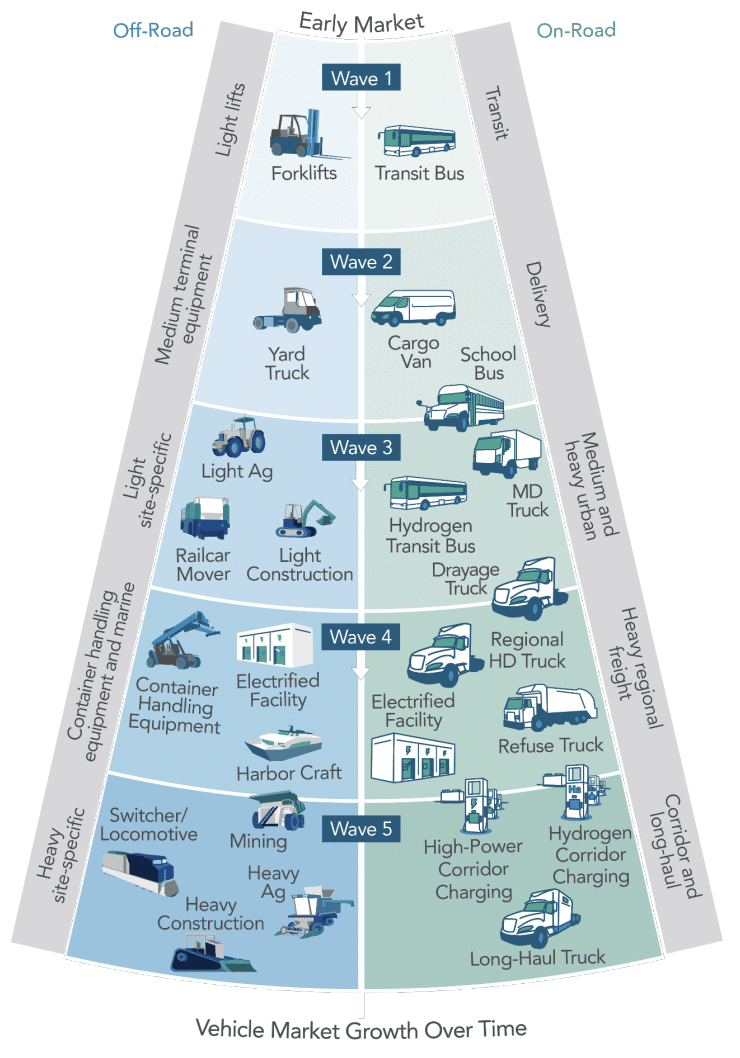
Vans
Momentum in the medium-duty electric van market is being spawned by Amazon, Fed-Ex, UPS, and the USPS, which have all committed to and begun electrifying their delivery fleets. These delivery companies and the USPS have greenhouse gas emissions reduction goals that require their fleets’ rapid electrification. Each aligns with different electric van manufacturers: Amazon with Rivian, Fed-Ex with GMs’ BrightDrop, UPS with Arrival, and the USPS with Ford.
Delivery vans drive approximately 125 miles daily, so electric delivery vans are designed to provide 150 miles of range per charge. And because the vans come back to the store, warehouse, or distribution center at the end of the day, charging infrastructure is much cheaper and easier to install than for longer-distance trucks that require costly and complex on-road charging.
Each major courier’s contracts with their manufacturer of choice will consume product availability for the next few years. However, once initial orders are met, manufacturers will likely have reduced costs and scaled up production to meet widespread mounting fleet and consumer demand.
Trucks
In 2021, trucks moved nearly 12 billion tons of freight domestically, 87% of which was shipped less than 250 miles; 44% below 100 miles, and 43% between 100 and 249 miles. Delivery vans, port and warehouse drayage trucks, and regional tractor-trailers can already get over 100 miles of all-electric range. This means that by focusing on electrifying these shorter-distance freight vehicles, we could clean up over 40% of freight transportation pollution today.
At the same time, electric vehicles, including (but not limited to) long-haul semis, garbage trucks, and fire trucks, are already being purchased by governments and companies. The heavy-duty truck sector is likely to electrify rapidly as vehicle manufacturing scales because the economics pencil out: these vehicles are cheaper to operate and maintain, providing fleet operators with a lower total cost of ownership, saving taxpayer dollars for public fleets, and increasing profits for private fleets.
Off-road applications, including forklifts, yard trucks, and rail trucks, are also ripe for electrifying. Today, these vehicles contribute heavily to air pollution, impacting the health of communities near ports, distribution centers, warehouses, and rail yards. Because the vehicles never leave the lot, installing the infrastructure to keep them charged is more manageable, like with delivery vans.
Buses
Electric school bus adoption is on the rise. As of December 2022, 1,398 electric school buses were either on order, delivered, or operating. Additionally, the EPA’s Clean School Bus Rebate Program awarded over $900 million for another 2,400 electric school buses to 389 school districts nationwide. Today, 5,612 committed electric school buses are in the pipeline, four times more than what was on order, delivered, or in operation at the end of 2022.
Committed Electric School Buses in the United States

Meanwhile, electric transit buses currently comprise over 2% of the nation’s fleet, with 5,240 on the road as of 2022, a 66% increase from 2021. And with the recent announcement of $1.7 billion in Bipartisan Infrastructure Law funding through the Federal Highways Administration’s Low- and No-Emissions grant program, more electric transit buses are coming to a city near you.
What to Expect
Forecasting the pace of EV adoption is tricky because there are so many variables at play. But today, many of those variables point in the same direction: aimed squarely at accelerated electric van, truck, and bus adoption.
Conducive public policy is de-risking the transition for incumbent and start-up automakers, charging infrastructure companies and investors while reducing the capital cost barriers that have blocked many fleet operators from purchasing electric options. The auto and charging infrastructure industries have matured over the past decade of light-duty EV deployment and have worked out several technological, logistical, and scaling kinks. And consumers and businesses alike are becoming increasingly motivated to address the climate crisis. For the transportation sector, which is the leading contributor to greenhouse gas emissions, electrification is the only viable market-ready solution on the table.
So expect to see in the next few years your home deliveries arrive in electric vans; goods moving along the highway in electric freight haulers; your trash picked up by electric garbage trucks; kids being picked up in electric school buses; and quiet electric transit buses roaming city streets. By 2030, it’s likely that all this increasing EV activity, along with the electric car in your driveway, will be the new normal.
The Southern Alliance for Clean Energy’s Electrify the South program leverages research, advocacy, and outreach to accelerate the equitable transition to electric transportation across the Southeast. Visit ElectrifytheSouth.org to learn more and connect with us.